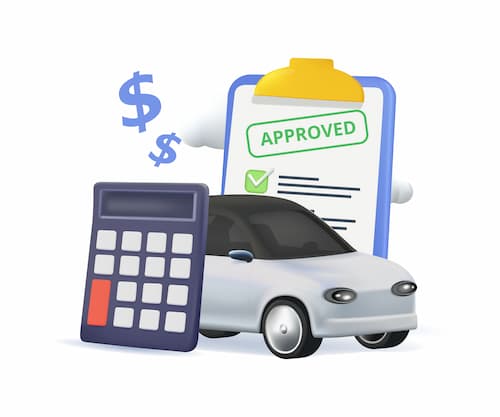- State Farm vs. Farmers: Which one is the cheapest?
- State Farm vs. Farmers: Rates by age group
- State Farm vs. Farmers: Rates for high-risk drivers
- State Farm vs. Farmers: Which is better rated?
- State Farm vs. Farmers: Rates in your state
- State Farm vs. Farmers: Which offers better discounts?
- State Farm vs. Farmers: The bottom line
- Methodology
State Farm vs. Farmers: Which one is the cheapest?
State Farm costs an average of $502 annually for state minimum coverage, while Farmers has average state minimum rates of $701 a year.
For full coverage with 100/300/100 liability limits and $500 deductibles for comprehensive and collision coverage, State Farm costs $1,984 per year. Farmers charges more, with an average cost of $2,387 annually.
It's always smart to shop around and compare quotes, since prices and coverage can vary by state and depend on your personal situation.
| Company | Average annual rate for full coverage | Average annual rate for state minimum coverage | Average annual premium for liability-only (50/100/50) car insurance |
|---|---|---|---|
| State Farm | $1,984 | $502 | $651 |
| Farmers | $2,387 | $701 | $991 |
State Farm vs. Farmers: Rates by age group
For a teen — one of the most expensive age groups to insure — State Farm has the cheapest rates, coming in at $5,368 per year. Farmers costs an average of $8,348 for a teen driver.
Age plays a big role in calculating insurance rates. Companies use data on speeding, accidents, and distracted driving. Teen drivers are one of the riskiest and the most expensive age groups to insure. Rates drop as you get older.
For example, adults pay an average of $1,985 a year at State Farm, while car insurance for adults at Farmers costs $2,336 per year.
| Age group | State Farm | Farmers |
|---|---|---|
| Teens | $5,368 | $8,348 |
| Young adults | $3,179 | $3,602 |
| Adults | $1,985 | $2,336 |
| Seniors | $1,858 | $2,290 |
State Farm vs. Farmers: Rates for high-risk drivers
State Farm has the best rates for high-risk drivers. A high-risk driver is someone who has multiple speeding tickets, accidents or a serious offense like a DUI on their record. This can make it a challenge to find affordable auto insurance.
For the drivers with DUI, State Farm is cheaper, with average rates of $3,179.
Take a look at the table below for State Farm rates compared to Farmers rates.
| Type of violation | State Farm | Farmers |
|---|---|---|
| 1 At-fault property damage accident over $2K | $2,411 | $3,914 |
| 1 At-fault property damage accident under $2K | $2,403 | $3,890 |
| At-fault bodily injury accident | $2,497 | $4,128 |
| Careless driving | $2,419 | $4,414 |
| DUI | $3,179 | $5,129 |
| Reckless driving | $3,037 | $5,089 |
| Speeding | $2,321 | $3,380 |
State Farm vs. Farmers: Which is better rated?
When choosing an insurance company, it's important to consider more than just price. Customer service, claims processing and a good online experience also matter. Check out the table below to see how State Farm and Farmers ranked among the best car insurance companies of 2025.
Overall, State Farm received a score of 4.27, while Farmers scored 3.69.
| Ratings | Farmers | State Farm |
|---|---|---|
| NAIC | 0.80 | 0.70 |
| AM Best | A | A++ |
| Average annual premium | $2,388 | $1,980 |
| Average monthly premium | $199 | $165 |
| Customer Satisfaction | ||
| Insurance.com score |
State Farm vs. Farmers: Rates in your state
Insurance rates change from state to state. Companies look at data from your ZIP code such as weather, crime, and traffic to figure out the risk. The table below shows where you'll find the lowest rates for State Farm and Farmers. Always compare multiple quotes, since your location, driving record, and personal details will affect your final price.
| State | State Farm | Farmers |
|---|---|---|
| Alabama | $1,790 | $2,542 |
| Alaska | $1,713 | N/A |
| Arizona | $2,233 | $2,331 |
| Arkansas | $2,060 | $2,248 |
| California | $2,701 | $3,035 |
| Colorado | $1,950 | $3,578 |
| Connecticut | $1,733 | $2,192 |
| Delaware | $2,153 | N/A |
| Florida | $2,119 | $3,261 |
| Georgia | $2,344 | N/A |
| Hawaii | $1,938 | $1,495 |
| Idaho | $1,120 | $1,606 |
| Illinois | $1,633 | N/A |
| Indiana | $1,616 | $1,956 |
| Iowa | $1,306 | N/A |
| Kansas | $1,976 | $1,992 |
| Kentucky | $2,753 | $3,548 |
| Louisiana | $3,570 | $3,002 |
| Maine | $1,262 | $1,664 |
| Maryland | $2,177 | N/A |
| Massachusetts | $689 | $1,966 |
| Michigan | $3,698 | N/A |
| Minnesota | $1,525 | N/A |
| Mississippi | $1,797 | N/A |
| Missouri | $2,072 | N/A |
| Montana | $1,858 | $2,939 |
| Nebraska | $2,344 | N/A |
| Nevada | $1,443 | $2,328 |
| New Hampshire | $1,155 | $1,954 |
| New Jersey | $2,153 | $2,254 |
| New Mexico | $1,669 | $2,740 |
| New York | $1,951 | N/A |
| North Carolina | $1,180 | $2,028 |
| North Dakota | $1,738 | $2,077 |
| Ohio | N/A | $1,794 |
| Oklahoma | $1,861 | $2,717 |
| Oregon | $1,502 | $2,210 |
| Pennsylvania | $2,473 | N/A |
| Rhode Island | $1,319 | $3,336 |
| South Carolina | $2,106 | N/A |
| South Dakota | $2,096 | $2,207 |
| Tennessee | $1,677 | $1,770 |
| Texas | $1,956 | $4,127 |
| Utah | $2,175 | $2,638 |
| Vermont | $1,139 | $2,333 |
| Virginia | $1,479 | N/A |
| Washington | $1,794 | $1,714 |
| Washington, D.C. | $2,426 | N/A |
| West Virginia | $1,691 | $2,442 |
| Wisconsin | $2,378 | $2,139 |
| Wyoming | $1,521 | $1,623 |
State Farm vs. Farmers: Which offers better discounts?
Discounts are a great way to save money on your annual insurance premiums. Below are some of the discounts that State Farm and Farmers offer to their customers.
| Discounts | Farmers | State Farm |
|---|---|---|
| Days advanced purchase | 8% | N/A |
| Homeowner | 5% | 2% |
| Paperless/electornic documents | 5% | N/A |
| Payment type | 5% | N/A |
| Purchase status | 5% | N/A |
| Safety devices | 3% | 4% |
| Marital status | 4% | N/A |
| Electronic funds transfer | 3% | N/A |
| Air bags | 1% | 2% |
| Daily commute | N/A | 2% |
| Loyalty | 1% | 18% |
| Lower annual mileage | 15% | 10% |
| Telematics | N/A | 13% |
| Multi policy | 11% | 10% |
| Anti-theft device | 0% | 1% |
When shopping for car insurance, always ask about available discounts to see which ones you qualify for.
State Farm vs. Farmers: The bottom line
Both State Farm and Farmers are solid insurance companies, but if rates are what matter most to you, State Farm may be the choice for you. However, we always recommend considering more than just rates to find the best car insurance for your needs and comparing quotes from multiple companies.
Methodology
National and state average rates are based on three coverage levels: state minimum, 50/100/50 liability-only, and full coverage with 100/300/100 liability and $500 deductibles.
Unless otherwise indicated, averages are based on our full coverage data set. This data set is based on:
- Bodily injury liability of $100,000 per person and $300,000 per incident
- Property damage liability of $100,000 per incident
- Comprehensive and collision deductibles of $500
- 40-year-old driver
- Honda Accord LX
- Good credit
- A clean driving record
- 12-mile commute, 10,000 annual mileage
Additional rate data is drawn based on:
- Ages ranging from 16 to 75
- Excellent, fair and poor credit
- All available traffic violations
- One or more at-fault accidents
- All available year, make and model data
Rates were fielded by Quadrant Information Services, with more than 220 companies and 34,588 ZIP codes surveyed.
Company ratings are based on our annual Best Car Insurance Companies survey and third-party data from:
- The National Association of Insurance Commissioners
- AM Best
See our full methodology here.



